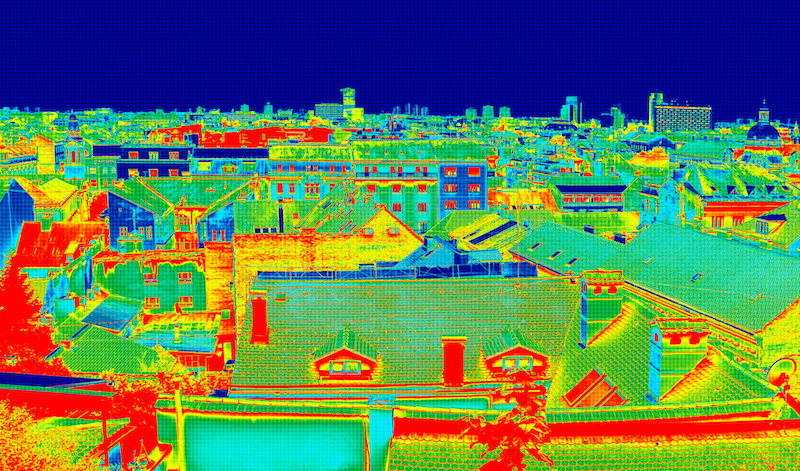Heatwaves and the urban heat island effect
June 2022: Research shows that heatwaves and urban heat islands reinforce each other’s effects. These heat islands are concentrations of buildings, paved areas and other surfaces that absorb and retain heat. Heat emissions from buildings are an important part of this heat island effect.

The world is experiencing more frequent and longer-duration heatwaves, which pose a serious threat to human health and the stability of electrical grids. Previous studies have identified positive feedbacks between heatwaves and urban heat island effects. Heat discharges from buildings and associated energy use have significant effects on the urban environment. This is why researchers need to understand the interactive effects of urban microclimate and building heat emissions on the urban energy balance.
We need to understand the interplay of urban microclimates and these building heat emissions and, to this end, new research has developed a method for modelling urban building energy and associated human-caused heat during city-wide heatwaves. Researchers used the method to examine the variation over time and space in emissions of waste heat from buildings in Los Angeles in a study that incorporated building type, urban microclimate, and large-scale climate conditions.
The researchers say that this method provides a high-resolution representation of how buildings contribute to heat islands during heatwaves, detailing both the magnitude and distribution of these heating effects. The simulation indicates that heat dispersing from buildings to the urban environment increases by as much as 20 per cent during a heatwave and most of this is waste heat from air conditioning.
The study’s results will serve as a fundamental step in continued investigations of the feedback between changes in building waste heat and urban microclimates during extreme heat events.
The study also found that the waste heat discharge in inland, dense urban districts is more sensitive to extreme events than it is in coastal or suburban areas. The generated anthropogenic heat profiles can be used in urban microclimate models to provide a more accurate estimation of urban air temperature rises during heatwaves.
Luo X, Vahmani P, Hong T, and Jones A: City-Scale Building Anthropogenic Heating during Heat Waves, Atmosphere 11, 1206 (2020), DOI: 10.3390/atmos11111206
Image: Smuki/Adobe Stock